That’s Why Bees Can Only Sting Once
Zzzzzzzzz doink! What was that on your arm? A bee, great. Not exactly a pleasant feeling. Painful, itchy, annoying, scary. We’ve all been there before.
So, that happens because the bee jabs its barbed stinger into your skin and releases some venom. That venom contains proteins that cause pain and can affect your immune system and skin cells.
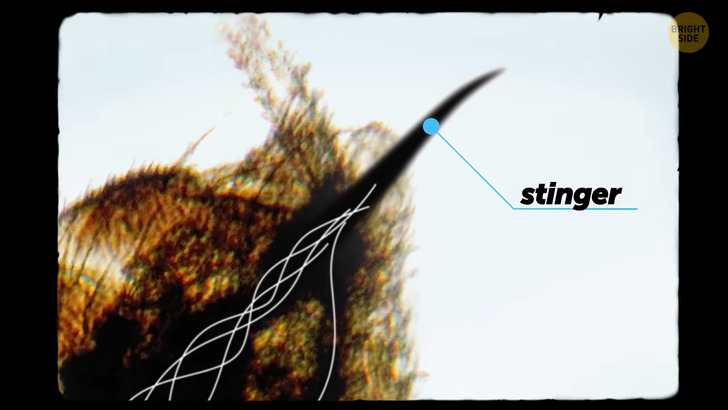
But that’s nothing compared to what the bee has to go through. Poor little thing, you’ll be fine after a few hours, but the bee? Not so much. Honeybees don’t usually sting people unless they feel threatened or if you accidentally step on them.
The problem is that after stinging you, the bee can’t pull its barbed stinger out of your skin. The only way to get free is to leave the stinger behind. That stinger though, is not just a sweet defense mechanism; it also contains parts of the bee’s digestive tract, nerves, and muscles that are, unfortunately, essential for a bee to function normally. So, yup, after losing all that, this tiny creature doesn’t survive. Yikes, poor little bee.
Apart from that, they’re such cool animals. They have 5 eyes, two pairs of wings, and 6 legs! Bees have excellent survival instincts, and they’ve been around for a really long time, 130 million years and counting! Who knows what ancient species they’ve stung?

Most bees in the hive are called worker bees, and the big cheese is called the queen. She lays around 2,000 eggs per day. Sound like a lot? Well, the average hive contains 50,000 bees, and they disappear after just one sting! I guess going through a painful and itchy experience doesn’t actually sound that bad when you only have one bee on your arm... Imagine if you had the whole hive!
It may seem like bees just aimlessly fly around or use their vision to decide where they go. But, these cool insects are pretty organized and rely on a super complex transport system. Imagine planning a cross-country road trip...only this time, there are no roads! I can’t even make it to the gym without my GPS... or if I stop at a burger joint on the way there.
But, not bees, they’re way cooler than us. They use B-Lines, well, I call them that. They’re basically a series of ‘insect pathways’ bees tend to follow through human towns or the countryside. These pathways link every existing wildlife area together. It’s like a bee railway system!
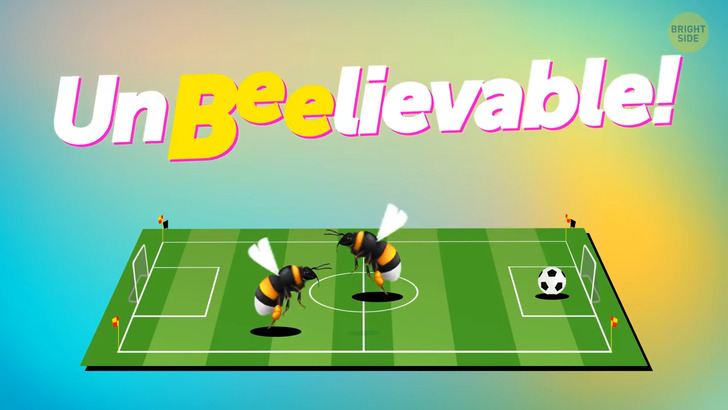
My favorite bee is the buff-tailed bumblebee. It has an oval-shaped body covered in dense hair and a brain the size of a poppy seed. Considering how small it is, that’s really impressive; How smart are they? Scientists made an experiment where they trained a bunch of them to play ’bee soccer.’ They even learned how to score a goal in return for a sweet sugary treat. Un-bee-lievable!
These same bees have another amazing ability. They use their ’smelly footprints’ to distinguish between the scents of strangers and their own bee relatives... they can even recognize their own scent. Bumblebees, we know your dirty little secret! You have smelly feet!
And then, there’s the Queen bee. She’s unique in her colony and her main task? Laying eggs. People often assume the queen is there to tell all the other bees exactly what to do... yeah, not really. She does have a certain influence, but even without her, the hive actually functions pretty well.
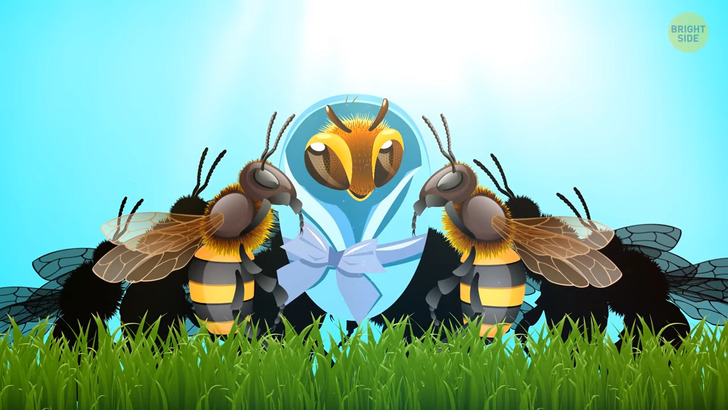
Each bee has a job and knows its daily functions and tasks because of its instincts, and the chemical signals it senses and uses. So, I guess no one needs to tell them how to BEEhave? Those chemical signals are their way of communicating. Oh, and they know how to shake it. They wiggle their bodies at specific angles for a certain amount of time, that’s how they send messages to each other.
If something happens to the queen bee, and she doesn’t survive, worker bees create a new one. Yup, they don’t find one, but sort of raise a new one. They choose a young larva and feed the future “Her Majesty” a special food called ‘royal jelly’. That lucky larva can now grow into the new queen!
Bees are fast, they beat their wings almost 200 times a second! Those 8 push-ups I can do in a minute, not sounding so impressive... Each bee produces around one teaspoon of honey in its lifetime. To produce 1 pound of honey, bees have to fly the equivalent of 1 whole time around the globe. These hardworking animals make around 100 million trips to about 2 million flowers to collect enough nectar for that pound of honey!
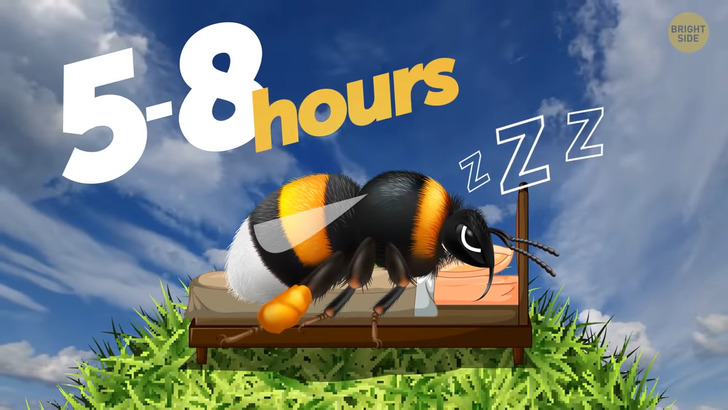
Honeybees sleep 5 to 8 hours a day, and, just like us, they rest at night. Their brains are pretty active when they’re resting, some scientists think they may be dreaming, also just like us! When Winter rolls around, a lot of insects replace their body water with a special chemical called glycerol. It’s a type of natural “antifreeze” that helps them stay alive in low temperatures. Bees though, just huddle together in the hive to stay toasty warm!
All right, enough about bees, let’s whip around the animal kingdom looking for crazy facts. Bats could eat a thousand insects an hour if they were insanely hungry, they’re the only mammal that can fly and...their leg bones are so thin, most of them can’t even walk!
Insects for the most part don’t have ears on their heads; instead, they have them all over their bodies. Snails can sleep for three, without waking up. Slugs have four, so they better avoid those stinky-feet bumblebees!
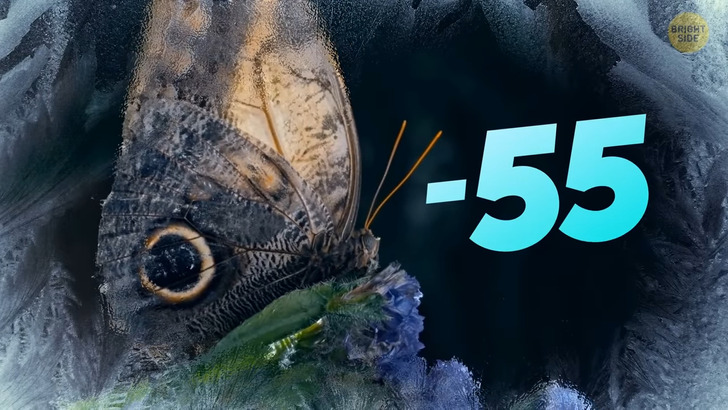
Butterflies are quite simple and practical animals that taste with their feet and only feed on liquids. They’re cold-blooded, so if it gets below 55 degrees, they can’t fly, look for food, or escape a sticky situation! Their main defense tactic is camouflage, which works pretty well until it gets cold! The opposite strategy is having vibrant, colorful patterns that let everyone know where you are. Colorful insects are often toxic, so birds and bigger insects tend to leave them alone.
Wasps recognize their relatives by identifying unique facial patterns. Ants don’t have lungs. Instead, they breathe through small holes all over their bodies. Also, they almost never sleep, but they do love to nap! Ants are incredibly strong and can carry more than 50 times their own weight. If you were that strong, you’d be able to carry an adult elephant, you know, like if it’s stepping on your toe, and you want to get it off you.
For every human, there are more than a million ants... And over 200 million insects. Luckily, they’re smaller than us. If they weren’t... we’d be the ants! You can hypnotize a frog if you place it on its back and gently stroke its stomach with your fingers. What if that worked on humans...
Hey, wanna hang out? I know a sloth does! Its weird biology allows it to spend most of its life just hanging upside down from a tree. A sloth is so slow it takes around a month to totally digest food.

Rhinos have horns made of the same stuff as hair! Scientists trained pigeons to be able to tell the difference between famous artists Claude Monet and Pablo Picasso. Okay, wait... Even pigeons are smarter than me now?!? Just when you think pandas can’t get any cuter, check this out: when they’re born, pandas weigh around 4 ounces and are smaller than a mouse!
Animals that have a superfast metabolism inside a small body, like squirrels do, see in slow motion. They evolved this feature to be able to escape bigger animals. That’s cool, when you think about it, it really makes them powerful.
Squirrels usually run away from their enemies by scampering off in a zigzag pattern. Because? No idea, sorry people. They tend to bury their food in many different places. Since it’s impossible to keep an eye on all their hiding spots, other animals like to sneak over and steal their goods. That’s why squirrels sometimes only pretend to bury their food somewhere, to throw off any potential thieves.
Ooh, how nutty of them! An ostrich has a brain smaller than its eye, but has really strong legs... it can run faster than a horse! Flamingos only eat when their heads are turned upside down.
Comments
Related Reads
5+ Astonishing Things That Make Curvy Women Absolutely Irresistible to Men

I Escaped Our Family Trip After My Son Issued a Humiliating Ultimatum

I Left My Wife on Our Wedding Night Because of Her Sick Surprise

20 People Who Would Probably Never Forget Their Hotel Stay

My Son Abandoned His Family for a New Woman, So I Decided to Teach Him a Valuable Lesson

My Daughter-in-Law Threw Away My Late Wife’s Keepsake — I Decided to Teach Her a Lesson

14 People Who Had Such Embarrassing Situations That They’re Still Blushing

21 Curious Stories That Took Place in Cafes and Restaurants

15 Awkward Situations That Could Happen to Any Parent

12 Disturbing Events That Crushed People’s Spirits

My Husband Was Silent When His Mother Was Berating Me and Insulting Our Child

15 People Who Became Victims of Life’s Ironic Surprises
